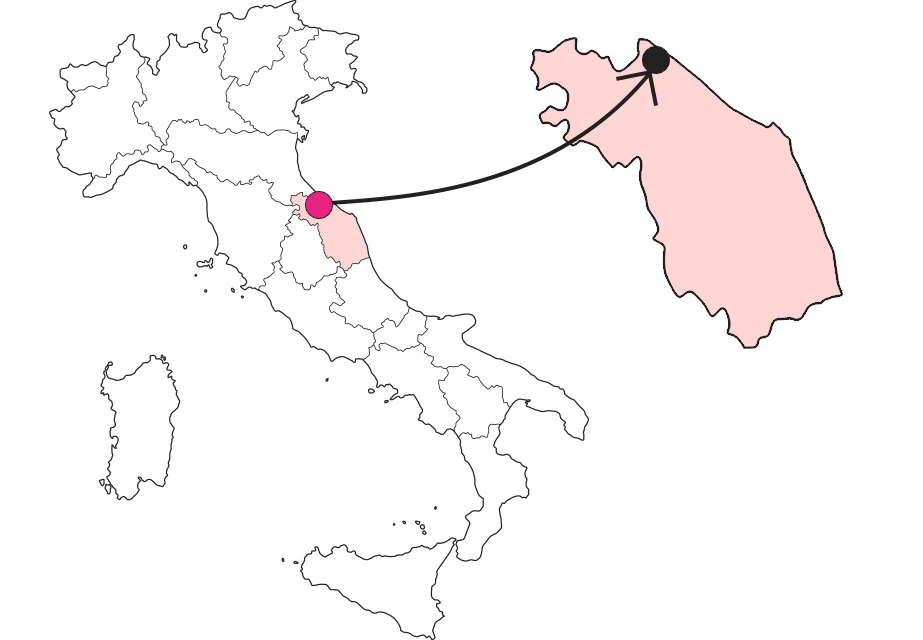

Where is

What it is and where it is
The history of Tavullia has its roots in the medieval period, when it was still known as Tomba di Pesaro. The term "tomb" in its Latin origin refers to an elevation, and Tavullia was in fact, thanks to its privileged position, one of the main castles in the area, an inescapable lookout for passers-by, who were often forced to pay gabelle and taxes in order to cross it, worried about escaping the vast quagmires of the valley. Still preserved from that medieval layout are the solid walls and the historic center, which can be accessed by a small uphill street that penetrates the walls.
Why it is special
As you continue through the narrow streets of the historic center, it is nice to savor its quietness, admire its beautiful houses, and come upon enchanting belvederes. Facing the historic center, the façade of the Church of San Lorenzo Martire stands out majestically, inside which rest the relics of St. Pius Martyr, to whom the town of Tavullia has always paid heartfelt worship. Inside, beautiful mosaics might hint at a Byzantine influence, but the reality is quite different: these are works created by the children of Tavullia, a symbol not only of faith but also of creativity and belonging to the territory.
Not to be missed
Like any self-respecting castle, Tavullia also has its tower. Here they call it the Cassero, and it is possible to climb to its top to enjoy a 360-degree view of the unparalleled panorama that surrounds Tavullia, the rolling hills of the Marche region and the villages that dot them.
A bit of history
Inside the Cassero is housed the permanent exhibition "Artists of War," which displays reproductions of paintings made by painters who followed the troops during World War II to immortalize wartime events. Tavullia, in particular, was the place where the Gothic Line, the German defense line against the Allies, was broken through between late August and early September 1944. A pivotal event that gave the start to the reconquest of Italian freedom. A solemn monument not far from the center, "Quota 204," was created in imperishable memory of the sacrifices involved in that liberation.
Trivia
In one of the small squares, a small square brick building rises from the ground and catches the eye. It is the mouth of the neviera, the large snow-filled cistern used by Tavullia families in the Middle Ages as an ante litteram refrigerator for storing food.
Enter the Map of Italy's Undiscovered Wonders and find treasures where you least expect it... Inspire, Recommend, Share...
Collections
The Map thanks:
Enter the Map of Italy's Undiscovered Wonders and find treasures where you least expect it... Inspire, Recommend, Share...
Where is

Collections



